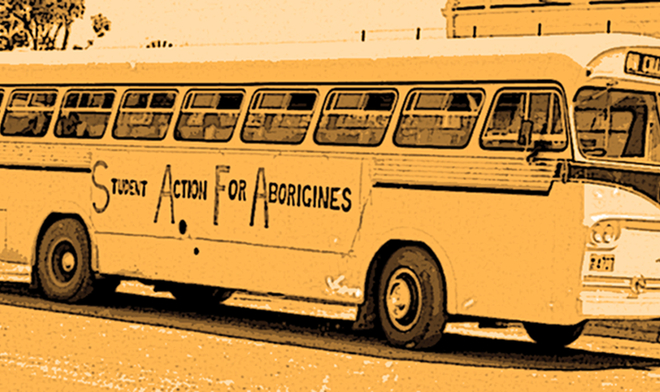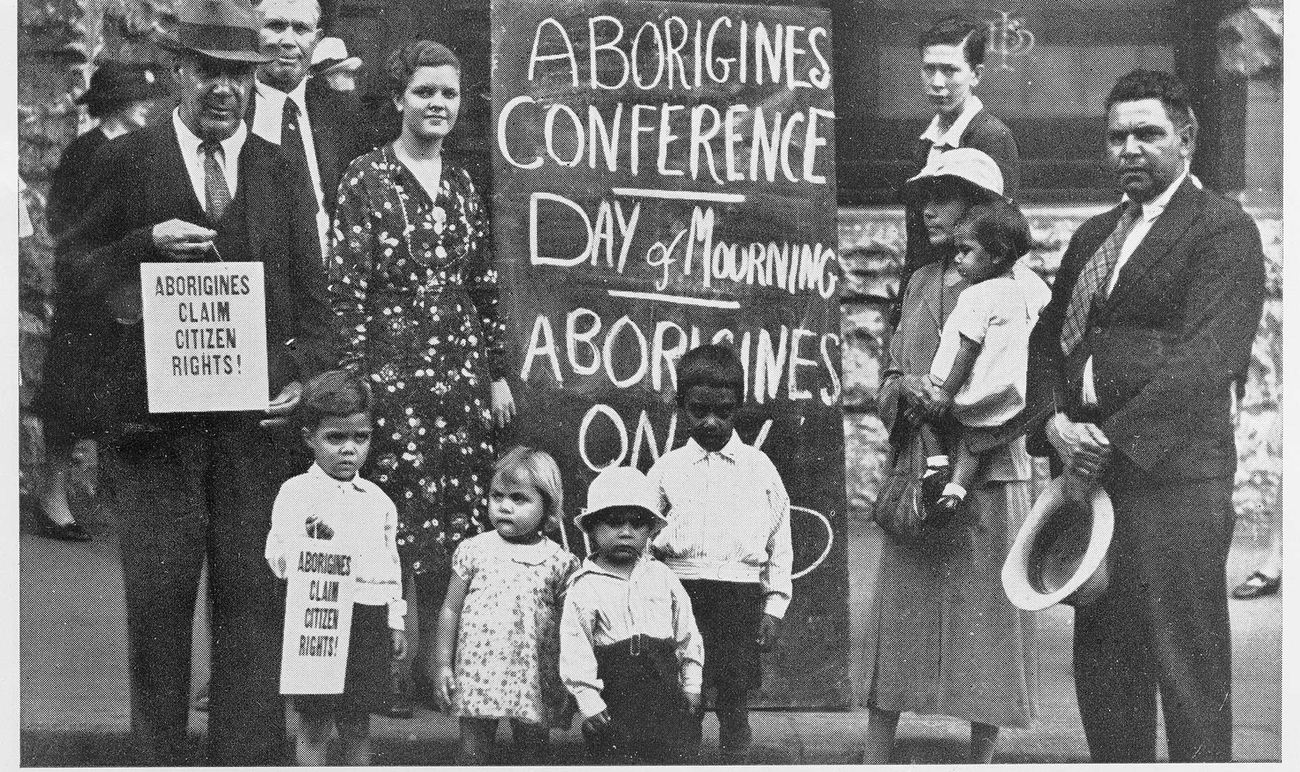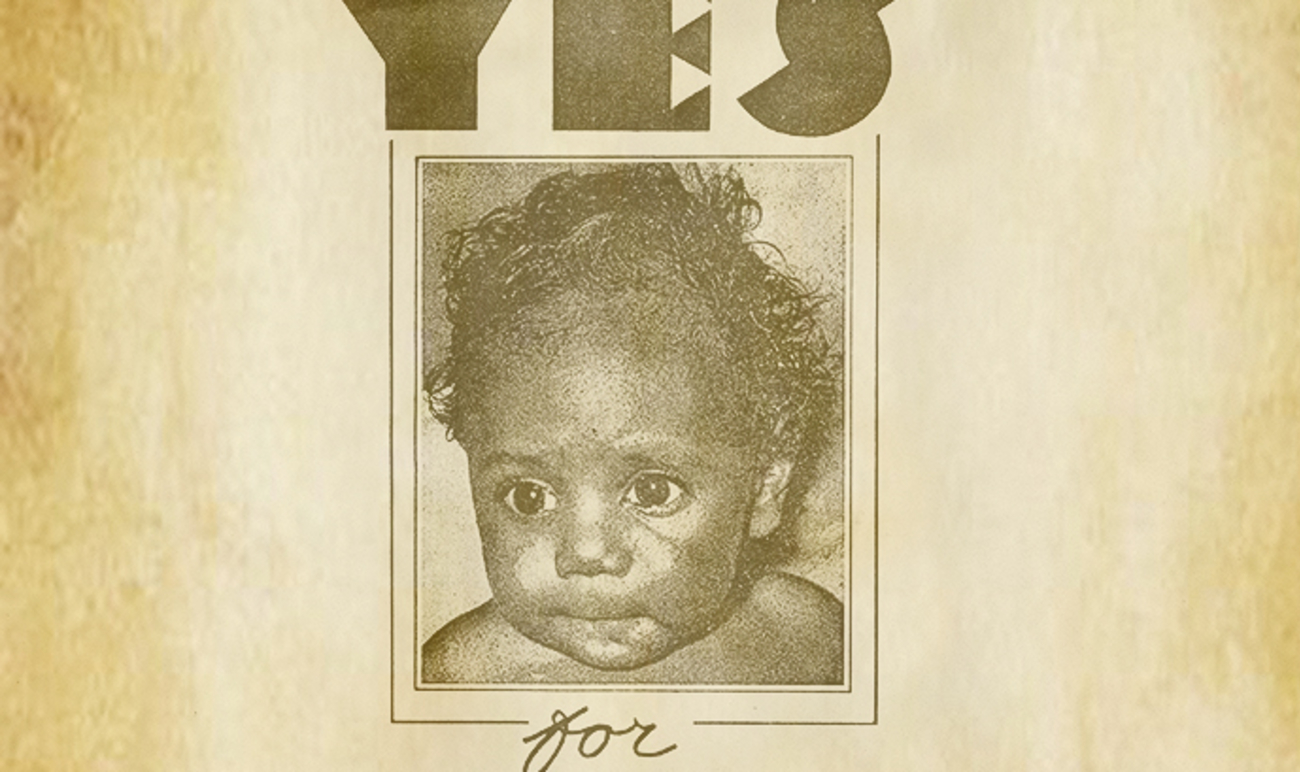William Ferguson founded the Aboriginal Progressive Association and led protests at the 1938 National Day of Mourning. He would become one of the most famous and important Aboriginal rights activists in Australian history.
‘To all you people of Aboriginal blood, I say…I am fighting for your freedom. Aboriginals still live under laws meant only to control criminals and lunatics: they are not allowed ordinary human rights… I can promise you nothing but the will to work.’ — Bill Ferguson, 1949.

Blanche Ferguson, Duncan Ferguson, Margaret Ferguson and William Ferguson in Dubbo, NSW. AIATSIS Collection, HORNER2.J01.DF-D00020635.
Blanche Ferguson, Duncan Ferguson, Margaret Ferguson and William Ferguson in Dubbo, NSW. AIATSIS Collection, HORNER2.J01.DF-D00020635.
Early life
William 'Bill' Ferguson was born on 24 July 1882 at Waddai, Darlington Point in New South Wales.
After attending a Warangesda mission school from 1895-96, Bill followed in his father’s footsteps and started working in Riverina shearing sheds as a 14-year-old.
It was here that his desire to improve Aboriginal rights and equality began — working alongside Indigenous teens who were working the same job as him, for half of the pay.
This was at odds with his family’s religious beliefs that ‘all men are equal under God’ and should be treated accordingly.
The beginning of a political life
After marrying Margaret Mathieson Gowans on 18 February 1911 at Narrandera Presbyterian Church, Bill and his family settled at Gulargambone. It was here that Bill reformed the local branch of the Australian Labor Party for which he served as secretary for two years.
During the 1920s, Bill became increasingly frustrated at the powers held by the New South Wales Aborigines Protection Board (APB) which had the authority to remove children from families because their parents were of Aboriginal descent.
When parliament amended the Aborigines Protection Act (1909) in 1936 to increase the powers of the APB, Bill decided it was time to act.
On 27 June 1937, Bill launched his own organisation, the Aboriginal Progressive Association in Dubbo, where he had settled with his wife and 12 children.
Turning point for Aboriginal rights movement
Many view the launch of the Aboriginal Progressive Association as the turning point in the Australian civil rights movement.
The movement gained national exposure on Australia Day in 1938. While the attention focused on the 150th anniversary of Governor Phillip’s landing, Bill, William Cooper and John Patten led Australia’s first national public civil rights protest.
The Day of Mourning protest outside Australia House was the culmination of years of despair felt by Bill, William and John after failed lobbying to draw attention to the multiple injustices done to Indigenous people.
The protest was also the catalyst for a meeting with Prime Minister Joseph Lyons five days later to campaign for equal rights for Aboriginal people.
‘We ask you to study the problem from the Aborigines point of view… we ask only for justice, decency and fair play. Surely your hearts and minds are not so calloused that you will refuse to consider your policy of degrading and humiliating and exterminating old Australia’s Aborigines.’
This passionate plea was rejected.

'Day of Mourning' Aboriginal meeting on 26 January 1938 at Australian Hall, Sydney, NSW. William Ferguson, Jack Kinchela, Helen Grosvenor, Selina Patten, John Patten. AIATSIS Collection, HORNER2.J03.BW-N04642_14.
'Day of Mourning' Aboriginal meeting on 26 January 1938 at Australian Hall, Sydney, NSW. William Ferguson, Jack Kinchela, Helen Grosvenor, Selina Patten, John Patten. AIATSIS Collection, HORNER2.J03.BW-N04642_14.
Fight until the end
From 1938, Bill oversaw five annual Aboriginal Progressive Association conferences across the state. In 1943, he successfully pioneered for two Aboriginal representatives to be elected to the Aborigines Welfare Board which replaced the old Protection Board in 1940. He served with the Welfare Board from 1944-49.
In June 1949, in his role as vice-president of the New South Wales branch of the Australian Aborigines’ League, Bill sent a deputation to Canberra asking for administrative reforms. Government officials were unresponsive.
Furious at being ignored by both political parties, Bill resigned from the Labor Party and stood as an Independent for Dubbo in the 1949 Federal election.
The United Nations Declaration on Human Rights inspired his policy of civil rights for all people, but he won only 388 votes.
Bill collapsed after his final speech and died of hypertensive heart disease on 4 January 1950 in Dubbo Base Hospital.

Committee meeting of the Australian Aborigines' League group. Athol Lester (NSW), Aussie Davies (Qld), William Onus (Vic), William Ferguson (NSW), Herbert Groves (NSW). AIATSIS Collection, HORNER2.J03.BW-N04642_10.
Committee meeting of the Australian Aborigines' League group. Athol Lester (NSW), Aussie Davies (Qld), William Onus (Vic), William Ferguson (NSW), Herbert Groves (NSW). AIATSIS Collection, HORNER2.J03.BW-N04642_10.
Dream comes to fruition
Seventeen years after Bill’s death his dream was realised when on 27 May 1967, the highest Yes vote ever recorded in a Federal referendum (90.77%) saw section 51 (xxvi) of the Constitution changed to shift Aboriginal people from unrecognised existence to be counted in the national census.
Fitting tribute
On May 4 2019, a special memorial statue of Bill was unveiled in Dubbo in front of a large crowd that included Bill’s sole remaining son, Fred Ferguson, and one of Bill’s grandsons, John Ferguson.
The statute pays tribute to Bill’s fighting spirit and will ensure his legacy continues to live on for generations to come.
‘There's little doubt Bill Ferguson had a profound impact on Aboriginal rights, and his passion for the cause should be celebrated and remembered, particularly in the region he called home. I look forward to more people being able to learn about the legacy Mr Ferguson created.’ — Dubbo MP Dugald Saunders.
William 'Bill' Ferguson was one of the most famous and important Aboriginal rights activists in Australian history.


